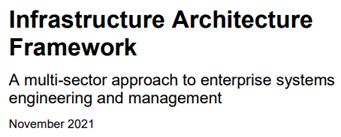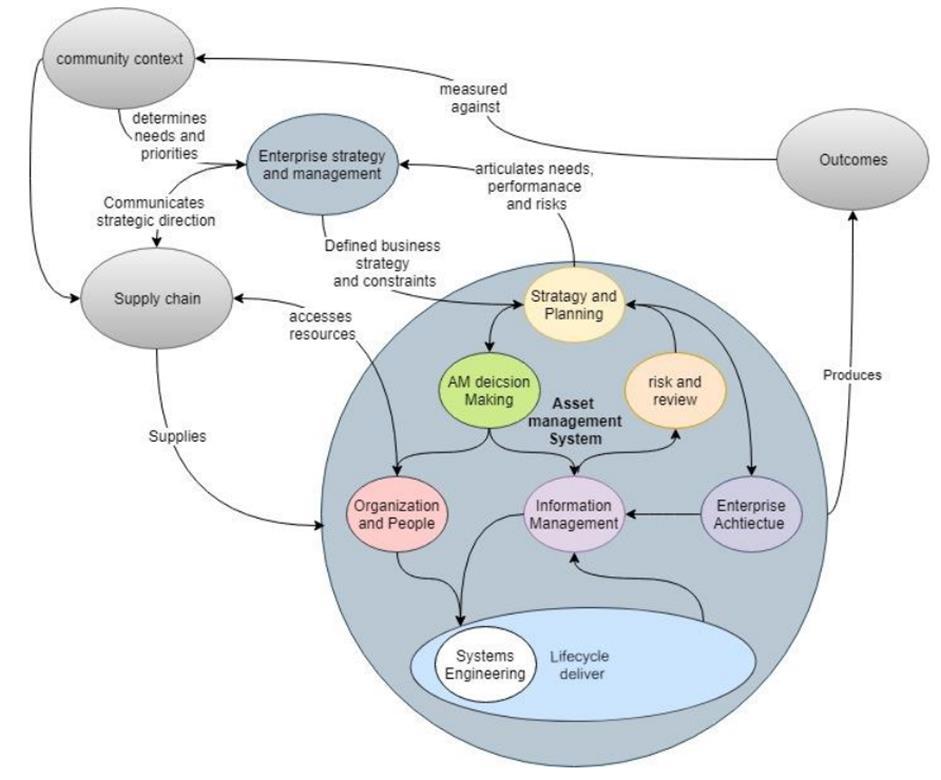
6 minute read
SYSTEMS ENGINEERING RESOURCES
SYSTEMS ENGINEERING RESOURCES
Useful artifacts to improve your SE effectivenessUseful artifacts to improve your SE effectiveness
Free-to-Read INCOSE Papers Available through Wiley
The Wiley online library, on behalf of INCOSE, has “unlocked” three sets of “Free to Read” papers from INCOSE journals. The first set of papers titled, “Featured Papers of 2020” include a diverse range of topics: • Business process improvement using Object-Process Methodology • A stakeholder framework for evaluating the -ilities of autonomous behaviors in complex adaptive systems • Exploring and managing the complexity of large infrastructure projects with network theory and model-based systems engineering - The example of radioactive waste disposal. • Operationalizing digital twins through model-based systems engineering methods The second set of papers, Model-Based Systems Engineering and Design Approaches, includes the latter two papers, plus four additional topics: • Unified design approach for systems engineering by integrating model-based systems design with axiomatic design • Model-based design of project systems, modes, and states • Toward a better integration of requirements and model-based specifications • Synergizing model-based systems engineering, modularity, and software container concepts to manage obsolescence The most recent set of papers, Systems Modeling Language (SysML) in Model-Based Systems Engineering, published on 6 January (and available until 15 April 2022) adds: • Employing SysML to model and explore levels-of-service: The case of passenger comfort in railway transportation systems • Verifying SysML activity diagrams using formal transformation to Petri nets • Systems modeling language extension to support modeling of human-agent teams • Model-driven architecture based security analysis • Comparative analysis of a model-based systems engineering approach to a traditional systems engineering approach for architecting a robotic space system through knowledge categorization INCOSE members in good standing may access all Systems Engineering Journal content without timeout concerns through their INCOSE Connect login. All other SyEN readers are encouraged to check periodically for new releases of free-to-read papers from the Virtual Issues section of the Wiley Online Library. Please note that all such issues have an expiration date. Don’t delay.

Infrastructure Architecture Framework (IAF)
In November, 2021, a trans-disciplinary team led by the New York Academy of Sciences, funded by the United Engineering Foundation, with support from Mott MacDonald, ASCE, ASME, AIChE, IEEE, and INCOSE, released a 68-page report, titled Infrastructure Architecture Framework: A multi-sector approach to enterprise systems engineering and management. The purpose of the IAF is to address the need to align different standards for managing physical civil infrastructure in a holistic, integrative manner with an overall systems view. The team sought to demonstrate the feasibility of establishing a common specification for an architectural framework that could support the transformation of civil infrastructure as complex socioeconomic systems. The project included the establishment of a functioning trans-disciplinary engineering partnership and the delivery of draft framework that will facilitate communication between management, operational, engineering, and information systems. The project focused on the modeling and integration of four domains: • Asset management • Systems engineering • Enterprise architecture • Information management The project sought to answer four key questions: • What are the business models, capabilities, processes, and functions necessary for infrastructure systems lifecycle management? • What are the data and information management models, capabilities, processes, and functions necessary for infrastructure systems lifecycle management? • How should the integration of management, information, and engineering systems be addressed within the Infrastructure Architecture Framework? • What are the models, capabilities, processes, and functions necessary for the management of change (MoC) of infrastructure systems? The System of Interest (SOI) addressed by the IAF includes the public and private infrastructure enterprises provisioning the energy, transportation, clean water, and waste management services that sustain the social and economic activities of a city, using the New York metropolitan area as the demonstration example. Beginning with a May, 2021 workshop, facilitators used the SystemiTool, developed by the Systems Engineering Research Center (SERC) and Stevens Institute of Technology, to drill into the business models, capabilities, and functions necessary for infrastructure lifecycle management and examined the data and information management models and systems engineering techniques necessary for the design and management of cyber-physical infrastructure system. These integrated and visual system models, known as Systemigrams, are featured through the report.


Simplified IAF Systemigram
The report ends with consideration on how to take the IAF from theory into practice and identifies areas for future research, including Sustainability, Incident Management, Geographic Information System (GIS), Human Dimension, Management of Change, Risk Management, Legal and Procurement Framework and Maturity Models. Download the report.
Complexity Primer for Systems Engineers
INCOSE has published an updated version of the Complexity Primer for Systems Engineers. This 20-page whitepaper is a product of the INCOSE Complex Systems Working Group, with the support of numerous additional contributors.
The Primer is available through INCOSE Connect. It is free for INCOSE members.
Topics include: • What is complexity? (Characteristics of complexity, Identifying the right level of complexity) • Solutions for complexity (Complexity thinking; guiding principles, Specific methods) Of particular note are the fifteen guiding principles that represent a shift in thinking that is needed for systems engineering practitioners to successfully engage with ever-increasing complexity in both problem and solution domains.
NIST AI Risk Management Framework Concept Paper
The U.S. National Institute of Standards and Technology (NIST) has published an 8-page concept paper summarizing its evolving Artificial Intelligence (AI) Risk Management Framework. The concept paper incorporates input from the Notice of Request for Information (RFI) released by NIST on 29 July and discussions during the workshop, “Kicking off NIST AI Risk Management Framework,” held 19-21 October. NIST Is seeking feedback as inputs prior to issuing an initial draft of the framework for public comment in early 2022. Specifically, NIST requests input on the following questions: • Is the approach described in this concept paper generally on the right track for the eventual AI
RMF? • Are the scope and audience (users) of the AI RMF described appropriately? • Are AI risks framed appropriately? • Will the structure – consisting of Core (with functions, categories, and subcategories), Profiles, and
Tiers – enable users to appropriately manage AI risks? • Will the proposed functions (Map, Measure, Manage, Govern) enable users to appropriately manage AI risks? • What, if anything, is missing? Download the AI Risk Management Framework Concept Paper here.

PDMA Classic Article on Steve Jobs and Innovation
The Product Development Management Association (PDMA) maintains a Knowledge Hub (kHUB) that contains a rich library of resources to assist the product development and innovation community. PDMA recently highlighted one of their most read articles: Steve Jobs: A Product Developer’s Perspective. First published in 2012, the article evaluates Job’s “Think different” legacy using Will Strobel’s 2007 definition of innovation:
“Innovation is the process of successfully identifying, developing and implementing new ideas which create new value”.
Addressing the reproducibility of Job’s success in other individuals and organizations, the article goes on to compare Job’s approach to innovation against seven skills that drive innovation success, including: • Connecting the unconnected; • Respectfully challenging the status quo; • Flipping perspective; • Embracing constraints; • Studying customers like a scientist; • Experimenting; and • Networking. Read the full article here.



